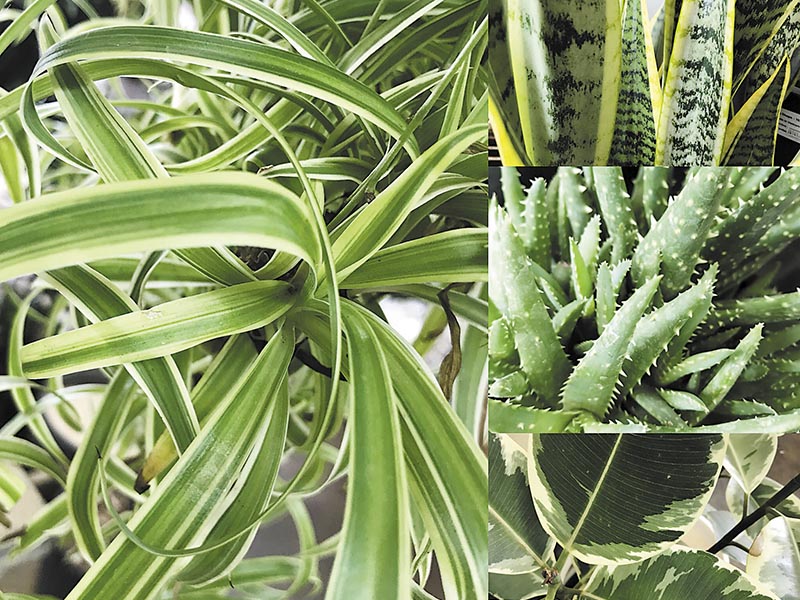By Anne Wright-Levi
Q. What are the best house plants to clean the air in my home?
A. House plants help clean the air which aids in better sleep and breathing indoors. Plants absorb toxins (like ammonia, benzene and formaldehyde) from the air at the same time that they take in carbon dioxide, which is then processed into oxygen through photosynthesis. The microorganisms associated with the plants are present in the potting soil and these microbes are responsible for helping the plant’s cleaning effect.
Plants are known to increase mood and productivity, enhance concentration and memory as well as reduce stress and fatigue. Although houseplants are great indoor air cleaners, some are more effective than others at filtering out pollutants and toxic chemicals in the air.
There are a handful of household plants that are all NASA scientist-approved for helping clear airborne toxins. NASA recommends two or three plants in 8 to 10-inch pots for every 100 square feet. Some plants are better at removing certain chemicals than others. Household chemicals come from objects and materials like: carpets, glues, ovens, cleaning solutions, as well as synthetic materials such as plastic, fiber, and rubber. You’ll benefit the most when you include a variety of plants in your home.
Wright in the Garden has picked six of our favorite plants that clean the air the best:
Spider Plant. The easiest to grow, making them a great choice for beginners or forgetful owners. Needs bright, indirect sunlight. Removes the following toxins: formaldehyde and xylene.
Dracaena. There are over 40 varieties of Dracaena plants. This plant likes brightly filtered light. Removes the following toxins: benzene, formaldehyde, trichloroethylene and xylene.
Ficus. This plant has some serious air-cleaning abilities and can grow to be 10 feet tall. Very low-maintenance, you can grow this plant in bright, indirect sunlight. Removes the following toxins: benzene, formaldehyde and trichloroethylene.
Rubber Plant. This plant loves bright, filtered light and water moderately to keep the soil moist. They are also at the top of the list for formaldehyde removers. Removes the following toxins: formaldehyde, carbon monoxide and trichloroethylene.
Snake Plant. Also known as Mother-in-Law’s Tongue. This is one of the hardest houseplants to kill. It does need occasional watering but prefers drier conditions and sun. Removes the following toxins: benzene, formaldehyde, trichloroethylene and xylene.
Aloe Vera. This houseplant is extremely easy to care for and contains some serious health aids. The plant leaves contain a clear liquid full of vitamins, enzymes, and amino acids that have wound-healing, antibacterial, and anti-inflammatory properties. Removes the following toxins: formaldehyde.
When considering air purifying plants think about your pets (especially cats and dogs), many of these plants can be toxic to them. Before purchasing these plants ask the staff at your local garden shop which plants are pet-safe and allergy-safe options.
Anne Wright-Levi is the owner of Wright in the Garden, an urban garden shop at 32nd St. and Shea, with over 30 years of gardening experience and knowledge of planting in our desert climate. www.wrightinthegarden.com





